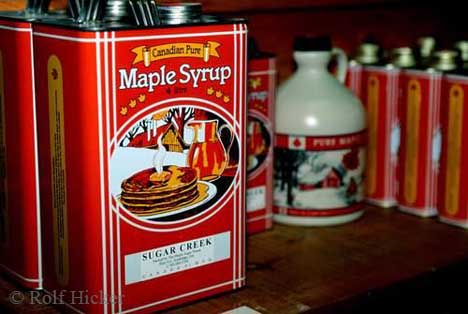УЧЕБНИК 1 КУРСА. Learningenglis ru learningenglis ru
 Скачать 18.07 Mb. Скачать 18.07 Mb.
|
A. Read the dialogue and reproduce it in Indirect Speech. Alex: Hi Clara. I haven’t seen you for ages! Where have you been? Clara: Hi Alex. I’ve returned from Canada. Alex: Was it a business trip? Clara: Exactly. I was impressed by the scenic charm of Ottawa, which is considered as one of the country’s most attractive cities. The capital is the public face of Canada for many people, so the city has been kept lovely and welcoming. Alex: Are there many places of interest? Clara: Yes, there are. It has many parks, museums, art galleries. But the Currency Museum impressed me most. It’s just great! Alex: Really? What did you see there? Clara: It contains an amazing collection of money and things used as money at different periods of time. Alex: What things? Clara: Well, there are shells, glass, beads, fish-hooks, teeth of animals, grain, cattle, cocoa beans, paper and metal. Alex: How interesting! Clara: Yes, even playing cards were used as money in New France in the 18th century. Alex: What’s the admission fee? Clara: The admission is free. B. Read this extract from a short speech made at a meeting. Fill in the gaps in the sentences below using the text. I am afraid there are a number of problems with this agreement. First of all, we feel that your company has not been reliable on several occasions in the past. We are particularly unhappy about the fact that there have been a number of late deliveries and these have caused us considerable problems. Another problem is that on at least five occasions you have supplied faulty parts and we had to return these to you. There is also the problem of discount. Originally you promised us a 10% discount. I am not very happy about the prices you charge either. 1) He said ... a number of problems with the agreement. 2) In particular, they felt that the company... reliable on several occasions. 3) There ... a number of late deliveries and he said that the company... faulty parts on at least five occasions. 4) He also mentioned that there ... the problem of discount. 5) Originally the company... a 10 per cent discount. 6) And he concluded he ... about the prices either. SPEAKING A. Read the additional texts with interesting facts about Canada and discuss this information with your partner.
Ottawa is encircled and interlaced by three rivers and a lazy canal with the rolling Laurentian Hills as its backdrop. Yet despite its scenic charm, the architectural dignity of many of its government buildings and the many miles of scenic drive bordering its Waterways, Ottawa has about it an unfinished air which reflects the young and developing country of which it is the capital. Canada’s Houses of Parliament stand in a setting of great natural beauty. It has many parks, museums, art galleries and universities. Some of Ottawa’s historic buildings go back to the early 1800s. OVER TO YOU Summarize the information about Canada. Give a two minute talk using one of the headings below.
READING 2: CANADA ECONOMY A. What do you know about the economy of Canada? Complete this file, use vertical prompts if necessary.
B. Do you know what these abbreviations stand for? Search a dictionary or the Internet if necessary: The IMF, GDP, G8, the OECD, the NAFTA, USGS. C. Match the words from the text below with the definitions, translate them.
D. Look at the box and check yourself if you have the same translation of the words given in Exercise C.
E. Look at the text below and find English equivalents for the following words and phrases: 1 высокоразвитый;воспользоваться преимуществом/извлекать пользу (выгоду); современный сектор услуг; продуманное руководство; соглашения о свободной торговле; по данным; 2 в отличие от; общий объем продукции, произведенной в стране (национальный продукт); быть занятым; развиваться быстрым темпом; 3 насчитывать/составлять; добывающая промышленность и сельское хозяйство; продукция добывающей промышленности и сельского хозяйства; молочная продукция; 4 что касается; производственный сектор; 5 подписывать; 6 лесоматериалы; древесная и бумажная масса; «мягкие товары» (относящиеся к сырью, которые не добываются, а выращиваются); второй по величине; в частности; 7 взвешенная фискальная (налогово-бюджетная) политика; 8 структура производства; высокий уровень жизни; предоставлять услуги. F. Read and translate the text. 1 Canada's economy is both mature and diverse, benefiting from an advanced services sector, an abundance of natural resources, sound management and free trade agreements. The Canadian economy is the eighth largest in the world according to the IMF. As of 2007, its nominal GDP was $1.274 trillion, with growth of 2.7%. It is part of the G8 and other 'rich clubs' such as the OECD. 2 Unlike most developed economies, Canada has moved from agriculture straight to services. More than two-thirds of the country’s output is contributed by the services sector, which employs nearly three-quarters of the working population. This industry is very diverse and includes the retail sector, financial services, real estate, education, health, high-tech, entertainment and tourism. All these sectors are developing at a rapid rate with retail and health leading growth. 3 In contrast, primary sectors account for about 3 percent of Canada’s GDP. But the primary sector plays an important role in Canada’s economic activity, as 1/4th of Canada exports are primary articles and many areas depend on the primary sector as their source of income. The main agricultural products are wheat, barley, oilseed, tobacco, fruits, vegetables, dairy products, forest products and fish. 4 As regards the manufacturing sector, Canada enjoys a large industrial base, which produces 26% of the country’s output. Although manufacturing has never been a dominant sector of the economy, it has been an important secondary industry and does manufacture a significant number of cars and light aircraft, mainly in central Canada.   5 Another important factor in the country's development was the free trade agreementwith the US that was signed in 1989, as well as the NAFTA treaty of 1994. These agreements linked several other key countries such as Mexico, Israel, Chile and Costa Rica to Canada and its economy. In January 2008, the country has also agreed to a Canadian-European free trade association that has further developed its robust economy. 5 Another important factor in the country's development was the free trade agreementwith the US that was signed in 1989, as well as the NAFTA treaty of 1994. These agreements linked several other key countries such as Mexico, Israel, Chile and Costa Rica to Canada and its economy. In January 2008, the country has also agreed to a Canadian-European free trade association that has further developed its robust economy. 6 Canada is the second-largest country in the world by land mass (after Russia), and is blessed with natural resources. Oil and lumber - and pulp & paper - are two vital industries and exports. According to the USGS, Canada has the second-largest oil reserves in the world, with its large oil and gas reserves in Alberta, British Columbia and Saskatchewan and the Athabasca Tar Sands. Canadian mines are leading producers of nickel, gold, diamonds, uranium, and lead. Canada is also one of the largest exporters of soft commodities including grains and wheat in particular. 7 Canada's sound fiscal management has been another major factor contributing to the country's economic superiority. Prudent management has given Canada a balanced budget throughout the entire last decade. 8 Canada closely resembles the US in its market-oriented economic system, pattern of production, and affluentliving standards. But, despite being a market economy, Canada does have a significant room for government intervention and the government has indeed a significant impact on how public services are delivered.
I. Use words from each box to make word partnerships from the text: A) Ved + noun; B) Ving + noun; C) noun + noun; D) noun’s + noun. Translate these word partnerships. Add examples of your own.
J. For the direct question below, tick the correct indirect one. What are the main factors contributing towards Canada’s economic superiority?
K. How would find out politely the following information? Make up a dialogue based on them.
OVER TO YOU Choose any of G20 country and write a summary about its history, political system, economy, culture, its famous people etc. WORD FILE
| ||||||||||||||||||||||||||||||||||||
